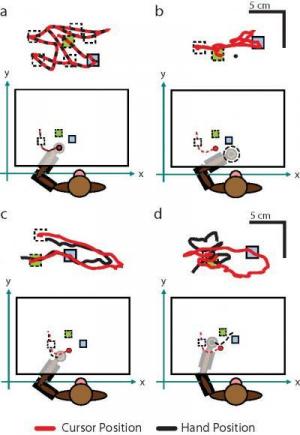Devices that translate brain activity into the movement of a computer cursor or an external robotic arm have already proven successful in humans. But in these early systems, vision was the only tool a subject could use to help control the motion.
Adding a robot arm that provided kinesthetic information about movement and position in space improved the performance of monkeys using a brain-machine interface in a study published today in The Journal of Neuroscience. Incorporating this sense may improve the design of “wearable robots” to help patients with spinal cord injuries, researchers said.
 |
Aided by a robotic exoskeleton, a monkey can hit the target faster and more directly
(Hatsopoulos, et al. The Journal of Neuroscience)
|
[ more ]
No comments:
Post a Comment